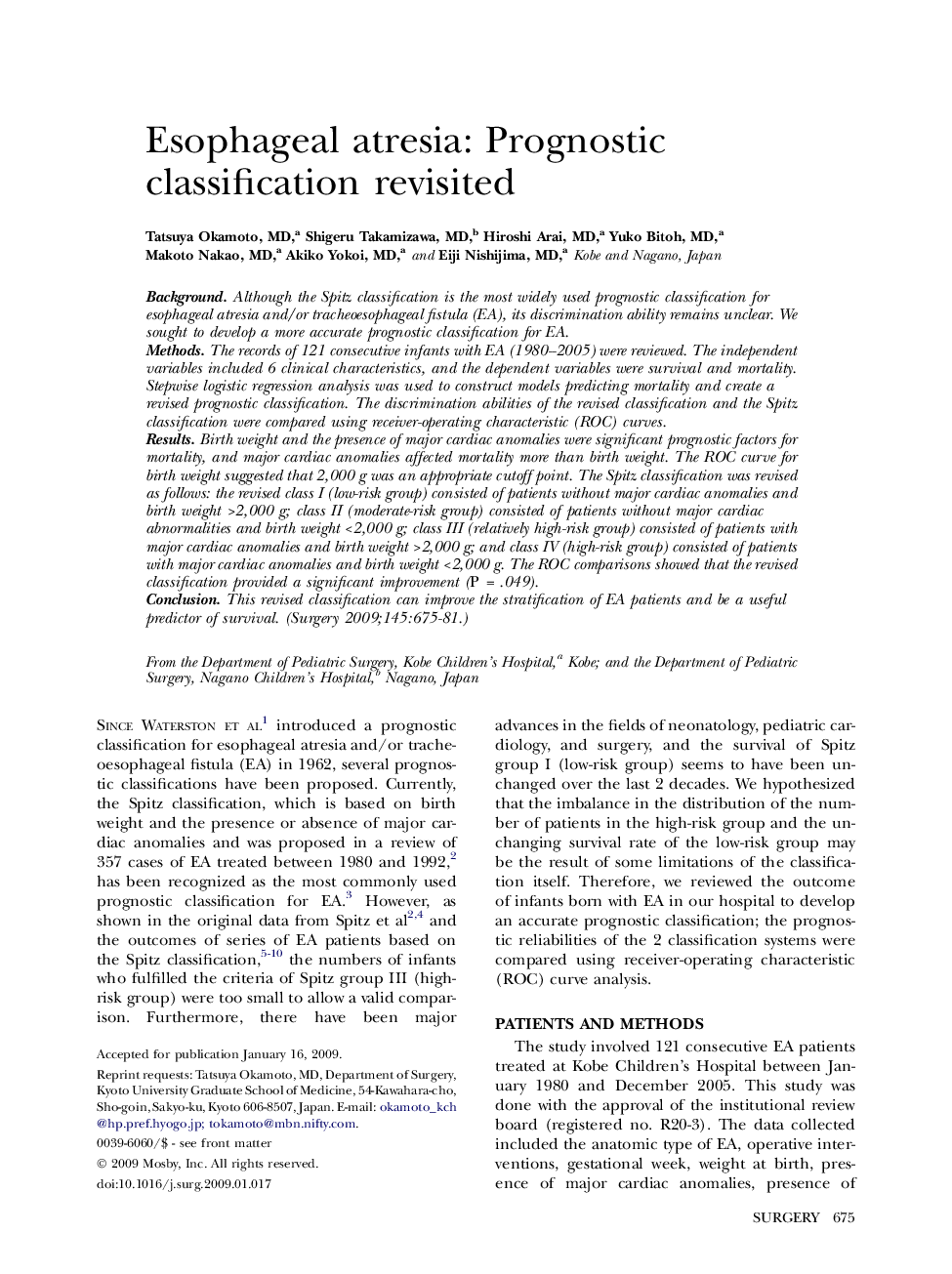| کد مقاله | کد نشریه | سال انتشار | مقاله انگلیسی | نسخه تمام متن |
|---|---|---|---|---|
| 4309652 | 1289319 | 2009 | 7 صفحه PDF | دانلود رایگان |

BackgroundAlthough the Spitz classification is the most widely used prognostic classification for esophageal atresia and/or tracheoesophageal fistula (EA), its discrimination ability remains unclear. We sought to develop a more accurate prognostic classification for EA.MethodsThe records of 121 consecutive infants with EA (1980–2005) were reviewed. The independent variables included 6 clinical characteristics, and the dependent variables were survival and mortality. Stepwise logistic regression analysis was used to construct models predicting mortality and create a revised prognostic classification. The discrimination abilities of the revised classification and the Spitz classification were compared using receiver-operating characteristic (ROC) curves.ResultsBirth weight and the presence of major cardiac anomalies were significant prognostic factors for mortality, and major cardiac anomalies affected mortality more than birth weight. The ROC curve for birth weight suggested that 2,000 g was an appropriate cutoff point. The Spitz classification was revised as follows: the revised class I (low-risk group) consisted of patients without major cardiac anomalies and birth weight >2,000 g; class II (moderate-risk group) consisted of patients without major cardiac abnormalities and birth weight <2,000 g; class III (relatively high-risk group) consisted of patients with major cardiac anomalies and birth weight >2,000 g; and class IV (high-risk group) consisted of patients with major cardiac anomalies and birth weight <2,000 g. The ROC comparisons showed that the revised classification provided a significant improvement (P = .049).ConclusionThis revised classification can improve the stratification of EA patients and be a useful predictor of survival.
Journal: Surgery - Volume 145, Issue 6, June 2009, Pages 675–681